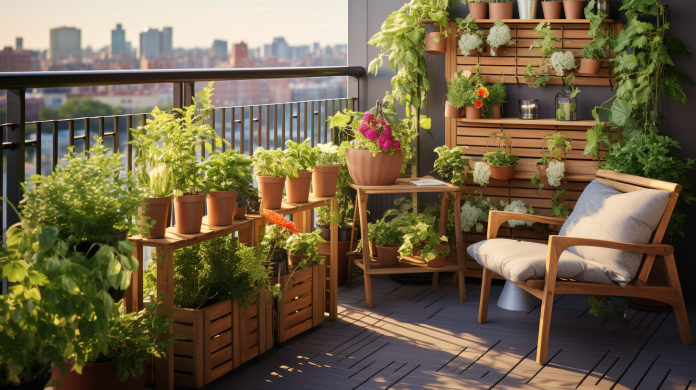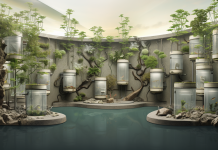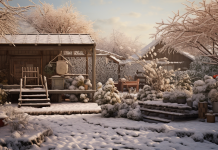Indoor gardening has become an increasingly popular hobby among plant enthusiasts. Not only does it provide a sense of tranquility and beauty to your living space, but it also offers numerous health benefits, such as improved air quality and reduced stress levels. Whether you have a green thumb or are a beginner, here are some expert tips to help you master the art of indoor gardening.
Choose the Right Plants
When it comes to indoor gardening, not all plants are created equal. Some plants thrive in low light conditions, while others require bright, direct sunlight. Before selecting your plants, consider the amount of natural light available in your home. Some popular indoor plants that are known to thrive in low light conditions include snake plants, ZZ plants, and pothos.
| Name | Botanical Name | Time of Year Available | Light | Useful Tip |
| Snake Plant | Sansevieria trifasciata | Year-round | Low to Bright | Water sparingly; they are susceptible to over-watering. |
| Pothos | Epipremnum aureum | Year-round | Low to Moderate | Keep soil moderately dry; avoid over-watering. |
| ZZ Plant | Zamioculcas zamiifolia | Year-round | Low to Bright | Allow soil to dry out between waterings. |
| Peace Lily | Spathiphyllum | Spring to Autumn | Low to Moderate | Keep soil consistently moist; mist leaves occasionally. |
| Philodendron | Philodendron hederaceum | Year-round | Low to Bright | Avoid direct sunlight; keep the soil moist but not soggy. |
| Spider Plant | Chlorophytum comosum | Year-round | Low to Bright | Prefers well-draining soil; avoid waterlogged soil. |
| Aglaonema | Aglaonema modestum | Year-round | Low to Moderate | Avoid cold drafts and sudden temperature changes. |
| Dracaena | Dracaena marginata | Year-round | Low to Moderate | Keep soil slightly moist; avoid fluoridated water. |
| Boston Fern | Nephrolepis exaltata | Spring to Autumn | Low to Moderate | Maintain high humidity; keep the soil damp. |
| Cast-Iron Plant | Aspidistra elatior | Year-round | Low | Tolerates neglect; water moderately. |
If you have ample sunlight, consider plants like succulents, herbs, or flowering plants.
Provide Adequate Light
Light is one of the most critical factors for indoor plants. If your plants do not receive enough light naturally, consider providing supplemental lighting. LED grow lights are an excellent option as they are energy-efficient and emit the right spectrum of light for plant growth. Position your plants near windows or invest in a timer for your grow lights to ensure they receive the correct amount of light each day.
“Ample sunlight” for houseplants typically refers to a generous amount of indirect, bright light that a plant receives within a day. It doesn’t necessarily mean direct exposure to sunlight, as direct sunlight can be too intense for many houseplants and might cause leaf burn or other damage. Instead, “ample sunlight” refers to a bright environment where the plant gets enough light to support its growth and metabolism without being overwhelmed by the intensity of direct sunlight.
Examples of “Ample Sunlight” Locations in a Home
- Near a Bright Window: Positioned close to a window that receives a lot of light but is not overwhelmed by direct sun rays, like a north-facing window or a well-shaded south-facing window.
- In a Sunroom: Where the room is designed to allow a lot of light in, but the plant is not directly in the path of harsh sunlight.
- Rotated Regularly: If a plant is in a location that doesn’t get consistent light from all sides, regularly rotating the plant can ensure that all parts receive ample light over time.
Understand Watering Needs
Overwatering is one of the most common mistakes made by indoor gardeners. Each plant has different watering requirements, so it's crucial to understand the needs of your specific plants. Before watering, check the moisture level of the soil by sticking your finger about an inch deep. If it feels dry, it's time to water. Avoid excessive watering, as it can lead to root rot and other plant diseases. Additionally, using room temperature water is ideal, as cold water can shock the roots.
Ensure Proper Drainage
Good drainage is essential for indoor plants to prevent waterlogging and root rot. When selecting pots, ensure they have drainage holes at the bottom. If you have decorative pots without drainage holes, use a layer of gravel or pebbles at the bottom to create a drainage layer. This will allow excess water to escape and prevent water from sitting at the bottom, potentially damaging the roots.
Maintain Humidity
Most indoor plants thrive in a humid environment. To increase humidity levels, you can mist your plants regularly with water or place a tray filled with water near them. Another effective method is grouping plants together, as they release moisture through transpiration, creating a more humid microclimate.
Fertilize Regularly
Indoor plants often require regular fertilization, as the nutrients in potting soil can deplete over time. Choose a balanced, water-soluble fertilizer specifically formulated for indoor plants and follow the instructions for frequency and dosage. Be cautious not to over-fertilize, as this can lead to fertilizer burn and damage the plant.
Monitor Temperature and Air Circulation
Most indoor plants thrive in temperatures between 60-75°F (15-24°C). Avoid placing your plants near cold drafts or heat sources, as extreme temperatures can stress the plants. Additionally, ensure there is adequate air circulation in the room to prevent stagnant air, which can lead to fungal diseases.
By following these tips may help you master the art of indoor gardening. Create a thriving indoor garden that brings beauty and joy to your living space. Remember to observe your plants regularly, as they will often communicate their needs through their leaves and overall appearance. With patience and dedication, indoor gardening can become a rewarding and fulfilling hobby.
Please see our supporting article:
Composting in Small Spaces: Apartment and Urban Composting Solutions



